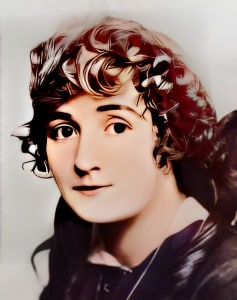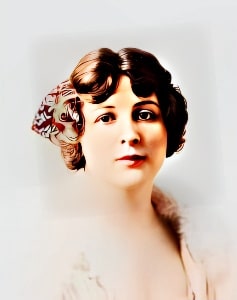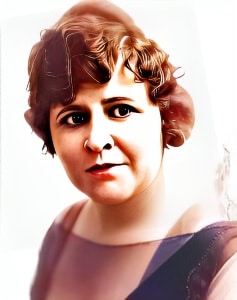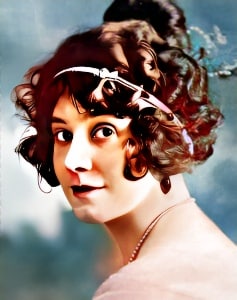 Adele DeGarde, an American actress born on October 15, 1879, in Philadelphia, Pennsylvania, is a notable figure in the early years of American cinema.
Adele DeGarde, an American actress born on October 15, 1879, in Philadelphia, Pennsylvania, is a notable figure in the early years of American cinema.
Her career spanned the late 19th century and the early 20th century, leaving an indelible mark on the silent film era. While her name may not be as widely recognized today as some of the leading stars of her time, her contributions to the film industry and her dedication to her craft played an important role in the history of early Hollywood.
DeGarde’s journey into the world of entertainment began in the theater, where she honed her acting skills before transitioning to the burgeoning film industry. The silent film era demanded actors who could convey emotions, character depth, and narratives primarily through nonverbal acting, relying on facial expressions and physical movements. Adele DeGarde possessed a remarkable talent for captivating audiences through her performances, making her an invaluable asset to the emerging film industry.
One of her most significant collaborations was with pioneering director D.W. Griffith. She appeared in numerous films directed by Griffith, contributing to the innovative storytelling and cinematic techniques that characterized his work. Although her specific roles may not be widely known today, her adaptability to complex characters and emotionally charged storylines in Griffith’s films demonstrated her acting prowess.
The transition to sound films marked a significant shift in the film industry, challenging many silent film actors to adapt to this new era. While detailed information about her roles in sound films is limited, Adele DeGarde’s ability to make this transition reflects her commitment to her craft and her determination to remain relevant in an evolving industry.
Adele DeGarde’s work extended beyond her partnership with D.W. Griffith. She appeared in a wide variety of silent films, showcasing her versatility as an actress. Her filmography featured dramas, comedies, and character-driven roles, illustrating her ability to portray a diverse range of characters and narratives. Her performances added depth and emotion to the stories portrayed on the silent film screen.
One of her notable films, “ The Country Doctor,” emphasized the importance of the doctor-patient relationship and trust. The film’s narrative followed the story of a dedicated country doctor who exemplified the virtues of a caring and selfless medical professional. DeGarde’s involvement in this film highlighted her talent for engaging with complex characters and emotionally charged storylines, making her a significant contributor to the early cinematic storytelling.
In conclusion, Adele DeGarde was an American actress who made a lasting impact on the early years of American cinema. Her career spanned the late 19th century and the early 20th century, during which she showcased her versatility as an actress. Her performances enriched the narratives and added depth to the stories portrayed on the silent film screen, making her a noteworthy figure in the early days of American cinema.
While her name may not be as widely recognized today as some of her contemporaries, Adele DeGarde’s work with pioneering directors like D.W. Griffith and her adaptability to the changing landscape of the film industry underscore her commitment to her craft. Her contributions to early Hollywood remain a valuable part of the history of cinema, paving the way for the evolution of narrative storytelling in film.
Loading live eBay listings...




